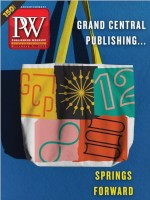It is no secret that the U.S. printing business had been battered for years as the popularity of digital formats significantly reduced demand for magazines, catalogs, and other printed materials. While sales of books held up better than those of their print counterparts, many of the largest printers worked across multiple product lines. And as a result, some of the industry giants (R.R. Donnelley, Quad Graphics) underwent wholesale makeovers, while smaller companies either closed or merged to cope with the plunge in demand.
At a spring webinar presented by PW and Westchester Publishing Services, Jim Fetherston, president and CEO at the printer Worzalla noted that when the pandemic hit and book sales unexpectedly surged, North American printing capacity was at “historic low levels,” which led to demand exceeding capacity for the first time in years.
Fetherston recently said that there have been important shifts in printing since then, with the capacity crunch easing, the availability of some paper grades improving, and increases in paper costs slowing—and for some grades, falling slightly. “In 2021 we would get an increase in paper prices every month,” he noted. “That isn’t happening this year.”
Still, the paper market continues to face challenges. Many paper mills are owned by private equity firms and are more disciplined on how they approach the market, tending to limit the grades they offer and producing paper on specific timetables. There is paper available, Fetherston said, but publishers need to be flexible. “Publishers have to be open to adjusting the type of paper they want to print their books on,” he added.
The most important factor in easing the printing crunch, Fetherston acknowledged, is the decline in orders from publishers, especially since mid-October, when they began to cut back as sales slowed. But he sees that as only a blip and predicts that capacity will tighten again in 2023, a forecast he made based on the orders he has already received from publishers. At present, Fetherston said Worzalla has some wiggle room to accommodate rush orders, “but not too much.”
Fetherston noted that while demand may have dipped for the moment, the domestic printing market is still operating with capacity well below historic levels. With uncertainty continuing to grow over working in China, he said, midsize printers like Worzalla have a golden opportunity to take significant market share from Chinese competitors. “There isn’t a book publisher out there that isn’t looking to get out of China,” he said.
Fetherston said that the Big Five publishers have challenged U.S. printers to create more capacity. “I say it’s game on,” he added. He acknowledged that China has a sophisticated printing infrastructure, but much of its pricing edge is being eroded by constant Covid lockdowns, shipping rates that remain well above old levels, and more attempts at censorship. “Publishers would prefer to work with someone in their own backyard,” he explained.
Matt Baehr, executive director of the Book Manufacturers’ Institute, said many other printers agree with Fetherston’s statements. The organization is working with publishers to match them with printers that have capacity. And to foster better communication between publishers and printers, BMI will hold its next conference in early February with PubWest, with networking and educational events.
For its part, Worzalla has recently finished a five-year, $60 million capital improvement program. The expansion brought the number of Worzalla employees to almost 400, including 25 staffers added this year. Fetherston said hiring will remain the printing industry’s biggest challenge for at least five years, as the pool of potential workers shrinks. It is the responsibility of manufacturers to make printing more attractive, he added. As printers become more automated, they are taking some of the physical aspects out of the job and looking for employees with technical skills.
“Printing plants don’t look like something out of Charles Dickens,” Fetherston said. “You can earn an excellent living.”



 Volume 269
Issue 51
12/05/2022
Volume 269
Issue 51
12/05/2022





